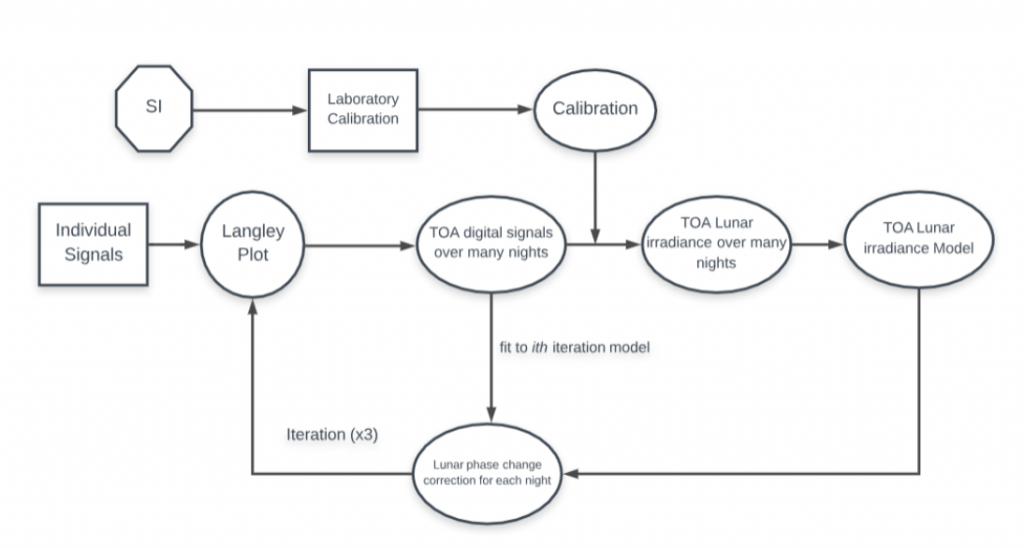ESA Project 3 : Improving the Lunar Irradiance Model of ESA (LIME)
Principal Investigator: Carlos Toledano Olmeda
Institution name: Universidad de Valladolid – Grupo de Óptica Atmosférica
Scientific Objetives
Absolute calibration of Earth observation sensors is key to ensuring long term stability and interoperability, essential for long term global climate records and forecasts. The Moon provides a photometrically stable calibration source, within the range of the Earth radiometric levels and is free from atmospheric interference. However, to use this ideal calibration source one must model the variation of its disk integrated irradiance resulting from changes in Sun-Earth-Moon geometries.
LIME, the Lunar Irradiance Model of the European Space Agency, is a new lunar irradiance model developed from ground-based observations acquired using a lunar photometer operating from the Izaña Atmospheric Observatory and Teide Peak, located in Tenerife, Spain. Nightly top-of-atmosphere irradiance is determined using the Langley plot method and each observation is traceable to the international system of units (SI), through the photometer calibration performed at the National Physical Laboratory. Approximately 590 lunar observations acquired between March 2018 and December 2022 currently contribute to the model parameter derivation, which builds on the widely-used ROLO (Robotic Lunar Observatory) model analytical formulation.

Figure.- Overview of the development of the LIME model.
This work presents the strategy used to derive LIME model parameters: the characterisation of the lunar photometer, the derivation of nightly top of atmosphere lunar irradiance and a description of the model parameter derivation, along with the associated metrologically-rigorous uncertainty. The model output has been compared to PROBA-V, Pleiades, Sentinel 3B as well as to the VITO implementation of the ROLO model. Initial results indicate that LIME predicts 3 %–5 % higher disk integrated lunar irradiance than the ROLO model for the visible and near-infrared channels. The model output has an expanded (k = 2) radiometric uncertainty of ∼2 % at the lunar photometer wavelengths, and it is expected that planned observations until at least 2024 further constrain the model parameters in subsequent updates.
Publications:
- Toledano, C., Taylor, S., Barreto, Á., Adriaensen, S., Berjón, A., Bialek, A., González, R., Woolliams, E., and Bouvet, M.: LIME: Lunar Irradiance Model of ESA, a new tool for absolute radiometric calibration using the Moon, Atmos. Chem. Phys., 24, 3649–3671, https://doi.org/10.5194/acp-24-3649-2024, 2024.
